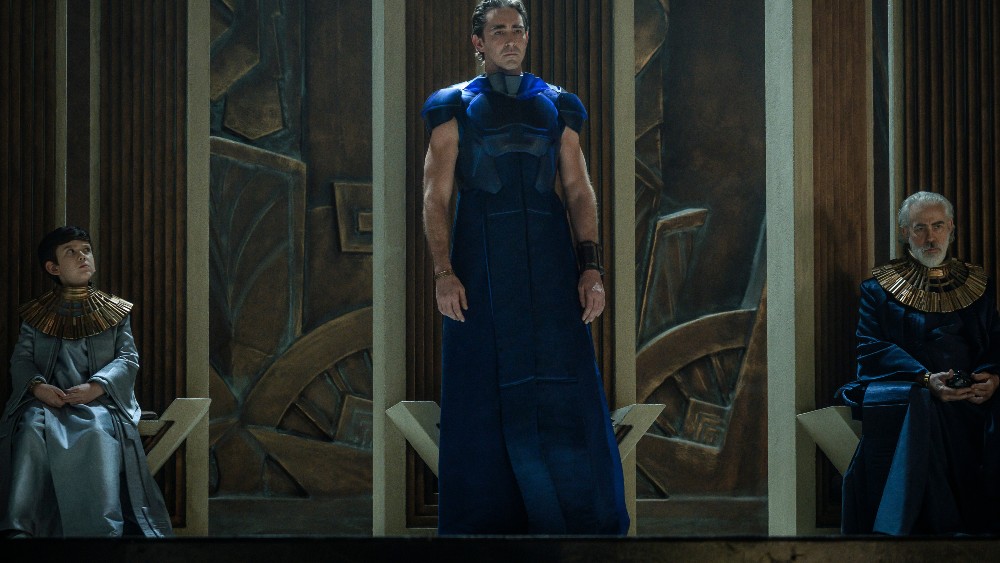
A scientist plans a new society by hastening the collapse of the current regime in Foundation, Apple’s big-budget series based on novels by Isaac Asimov. With battles reaching across the galaxy and stretching through decades, the show is as ambitious as science fiction gets.
Showrunner David S. Goyer (The Sandman, Batman v Superman: Dawn of Justice) based the first of eight planned seasons on the initial book in Asimov’s trilogy. Key characters include scientist Hari Seldon (Jared Harris), who plots the future through math; Empire aka Brother Day (Lee Pace), one of three clones who control the Galactic Empire; Gaal Dornick (Lou Llobell), a math prodigy who slowly uncovers the extent of Seldon’s true intentions; and Salvor Hardin (Leah Harvey), a warden on Terminus, which is a planet of exiles.
Production Designer Rory Cheyne has worked on several series, including Hannibal and American Gods, though Foundation presented a unique challenge for him. Cheyne spoke to Below the Line on Zoom from his apartment in Prague, where he is currently working on the second season of Foundation.
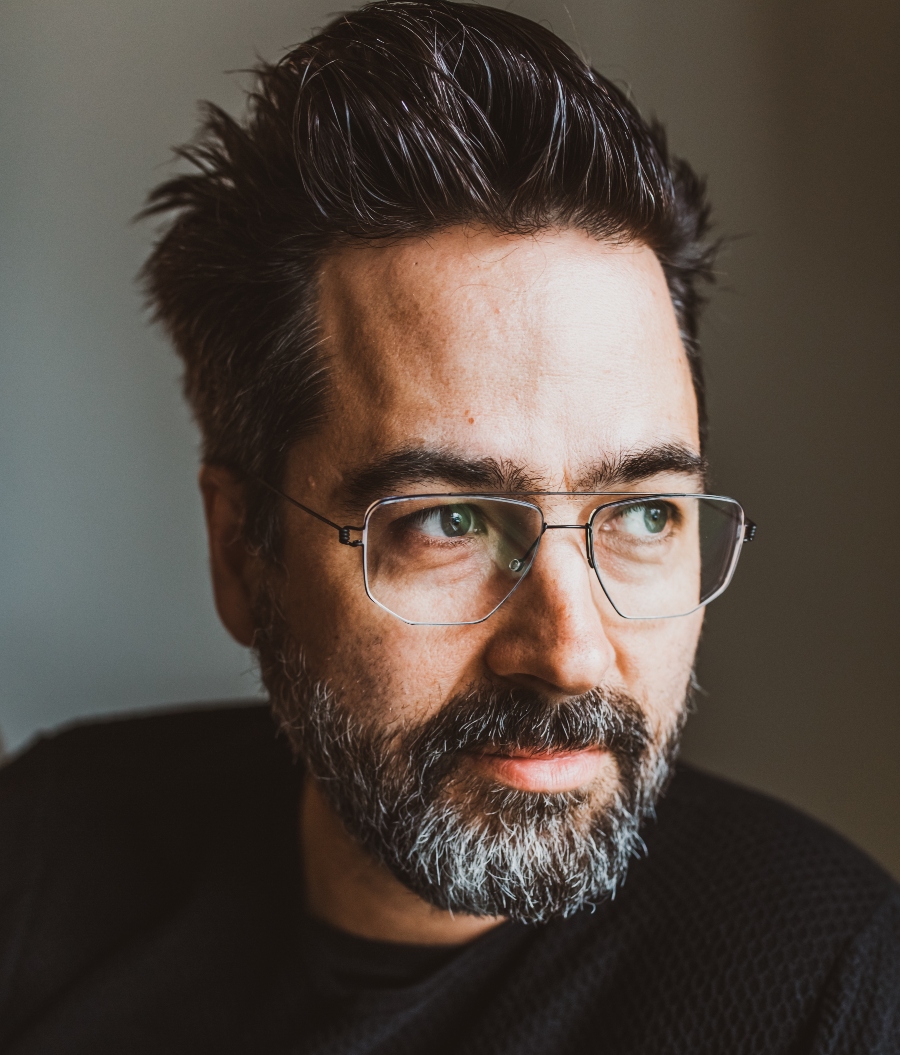
Below the Line: How does Foundation compare to your other work?
Rory Cheyne: Oh, it’s definitely the biggest project I’ve ever worked on. Even David Goyer, who’s done Batman, was like, ‘This is the biggest project I’ve ever done.’ We’re all learning every day on this thing.
BTL: I have to admit I haven’t read the novels, so I don’t know how much is based on Asimov and how much is pure imagination.
Cheyne: The books were really sort of big theory, right? Big ideas. I don’t know if the visuals were really explained in the books. We took it upon ourselves to come up with the visuals for each world we would be visiting. One thing we drew from was the novel art that people loved from that era, artists like Chris Foss. That style had these wild, crazy space shapes, and used a lot of color. I wanted to bring color into the series.
BTL: How detailed were the scripts?
Cheyne: I think this is the first time I received all the scripts ahead of time, all 10 episodes. Usually, I’ll get the first three episodes. In a traditional series prep, you prep an episode, shoot an episode, prep the next one.
With Foundation, I had to design the entire series before we started filming. We had six different directors, and we were block shooting as we moved from country to country. So everything had to be done upfront — spaceships, locations, everything fully scouted, designed, and built.
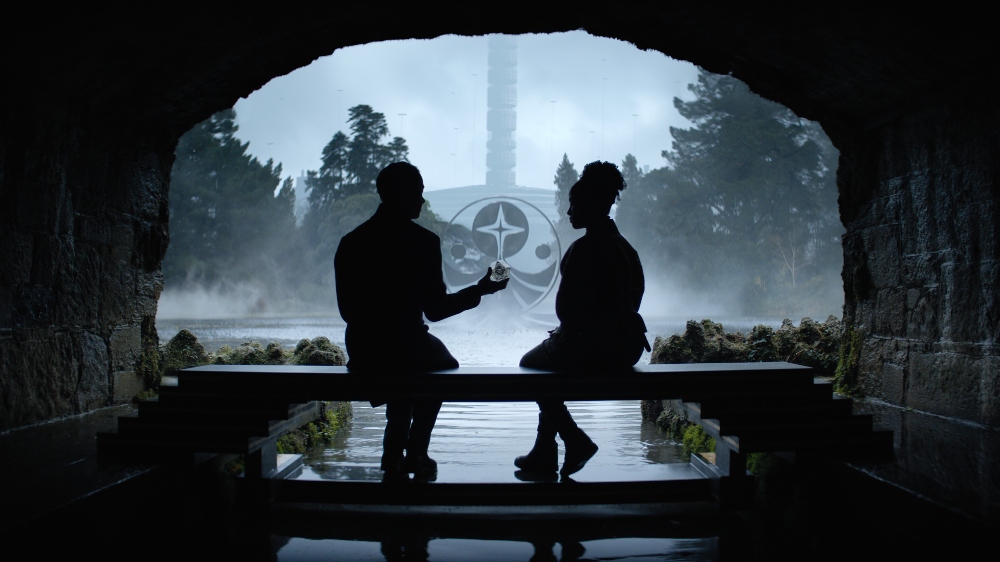
BTL: How did you find the future for the series’ different planets?
Cheyne: First, we broke the planets down by where I could shoot them. We shot in Iceland, Berlin, Lake Constance, the Canary Islands, and Malta.
Take Trantor, the headquarters for the Empire. My idea of Trantor was layers and layers of architecture on top of each other. A place like Berlin, it’s a city where you have styles of architecture from the ’80s, ’70s, and ’60s. We could find different places to shoot there that had the eclectic feel of what Trantor was going to be.
For Maiden, most of that planet is desert. We shot the architectural pieces in these old forts on Malta. The stonework there was a way to get different colors, oranges and light browns, arid colors. We shot the spiral where the Empire goes on his journey in the desert on the Canaries.
BTL: There’s a spectacular overhead shot on Maiden that shows a courtyard of gold and white tiles.
Cheyne: That came about after scouting, finding locations. We needed a sort of welcome area for the planet outside the palace. We used the same space after the death when they release rockets into space. We had a big, big crane shot that turned into a visual effect shot and went out to space.
BTL: How fully built out were the sets?
Cheyne: That’s a tricky thing. We tried to keep everything in-camera as much as possible. I worked with a friend, Chris MacLean, who was also the visual effects supervisor. We were always in a plane together, scouting and then going over our photographs to work out what would be real, where that real would end, and where he would take over so that we could have as seamless-looking a show as possible.
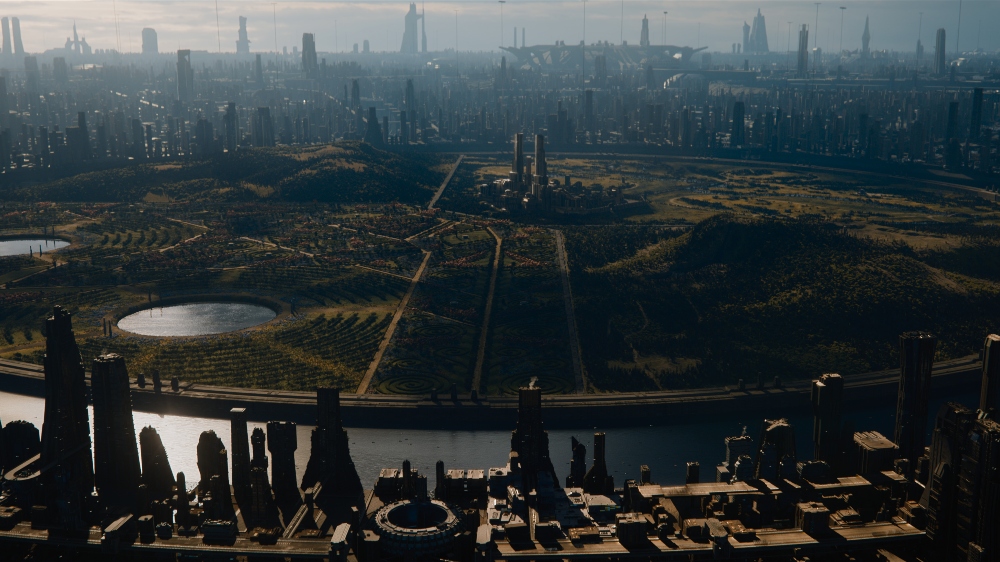
BTL: With something like the Terminus planet, how much did you build?
Cheyne: We shot a section of it in Iceland, where we built all those structures. The main part of Terminus City was Iceland, then we moved to the Canaries, which had a similar landscape. We built around 70,000 square feet of structures there. We used shipping containers, thinking that the settlers scuttled the spaceship they arrived on and scavenged its parts for buildings.
BTL: I really admired the detail you brought to things like infrastructure and utilities. The scenes on Trantor have so many levels, for example.
Cheyne: One thing I loved about the books is that Trantor was a planet that was so lacking in resources. It had no water or building materials, so the people relied on these giant supply ships.
When Dawn (Cassion Bilton) goes on his journey into the depths of Trantor, we used this huge water tank on Malta that is usually for period films. We used it like a sort of reservoir for the planet, where Dawn would jump off the edge and slide down into the Trantor sewer system. We built the slide, and Chris added a giant receiver coming in from space.
BTL: How do you collaborate with directors and DPs who might be working on only one or two episodes?
Cheyne: I communicate with them on a daily basis. The directors and DPs break down their scripts, do their storyboards, and come up with ideas for certain scenes. I present them with a design book of all our ships and all our worlds, what they look like, along with a package of location photos.
With the cinematographers, I need to be able to design sets so they can put their lights in the right place and also be able to put their lenses where they want. That might be by wilding the walls, moving lights, giving them more space.
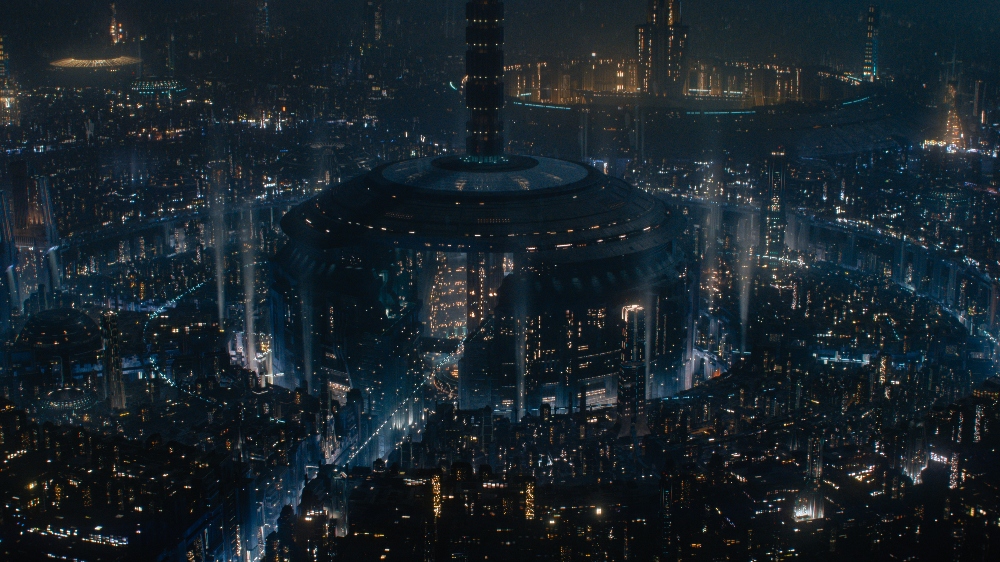
BTL: Are the sets 360?
Cheyne: Most of the sets are like a full, immersive space. There’s a scene in Episode 2 where Gaal gets into this escape pod. I wanted the pod to eject through the floor and then exit the spaceship. We built the set about 14 feet in the air so she could run down the hallway into the escape room, climb into the pod, and then the pod physically drops through the floor — and do it all in-camera.
BTL: Some DPs want to light an entire set at once, then adjust for individual shots.
Cheyne: The tricky thing about lighting spaceships is there’s no sun, right? It’s got to be all practicals on a spaceship.
BTL: The first season didn’t get through the initial book.
Cheyne: David keeps going on that this is an eight-year series.
BTL: Does the story expand onto other planets?
Cheyne: We have quite a few more planets to visit in Season 2. Deserts, jungles, more water, and we haven’t even seen the Mule yet.
Season 1 of Foundation is now streaming in its entirety on Apple TV+.





